Evaluation notes at the bottom of this post.
Alright, as promised… here is the packing list for my 6 week #rebootatforty thru-hike of Kungsleden (The King’s Trail) + Sarek. I find it helpful to see what kind of gear people pack when I research trips, so I am trying to return the favor. Less than one week away now!
My base weight is checking in at around 14 kg (not counting what I am wearing – on a warm day), so add food and water to that. I have really tried to slim down this list, but it is so-hard-to-pack-light, especially when you walk from one season into the next – by the end we might even see some snow on the ground! Although weather can be temperamentful up there by the Arctic Circle at any time of the year so you have to be prepared. Luckily there is very good access to water along the trail so I can fill often and don’t have to carry a lot weight in water. Another benefit of hiking in this pristine Swedish fell region is that water is safe to drink straight from the source, using common sense of course, so no filtration is needed.
*sent home, **needed fewer of/smaller size, ***replaced/exchanged
Feet
- boots: Lundhags Mira Mid
- shoes: Inov-8 Trailroc 245 (in-camp/wading)
- insoles: Superfeet (green)
Base layer (merino)
- briefs x2: Aclima
- sports bra: Icebreaker
- socks x2 sets thick+liner: Woolpower
- waterproof socks x1: Sealskinz
- t-shirts x2: Icebreaker**
Additions for Sarek + last week on trail (September)
- thermal long sleeve shirt: Woolpower
- thermal shorts: Aclima
Sleep
- merino socks: Woolpower
- merino boxers: Peak Performance
- merino tank top: Aclima
- merino thermal pants: Aclima
- merino thermal hoodie: Aclima
Mid layer
- long sleeve shirt: Bergans***
Reinforcement layer
- pants: Fjällräven Keb Gaiter (zip-off)
- puffy: CMP primaloft (w/hood)
- jacket: Haglöfs Tundra II (Gore-Tex)
- rain pants***
Accessories
- sun visor: Craft
- sunglasses: Red Bull Racing
- glove liners: Aclima (merino)
- gloves: Sealskinz (wind/waterproof)
- headband: Peak Performance
- buff/hat: Rufnek (merino wool)
- dress: Arcteryx (camp/town)*
Packing
- backpack: Osprey Aura AG 65L
- rain cover: Osprey (ultra light)***
- waterproof pack bags: Sea to Summit/ Osprey (misc sizes)
- waterproof compression sack: Sea to Summit (sleeping bag)
Sleeping
- tent: Hilleberg Soulo (later: Allak)***
- sleeping pad: Therm-a-Rest Neoair XLite (L)
- sleeping bag: Western Mountaineering Alpinlite
- silk liner: Sea to Summit***
Cooking
- camping stove: Primus ETA Express
- pot: PrimeTech 1L (Primus)
- gas: Primus (ca 230g/week)**
- utensils: plastic spork, long titanium spoon, large folding cup (“vikkåsa”)
- dishrag
- all-purpose soap: G Travel Washit All
Water
- hydration bladder: Platypus Hoser (2L)
- water bottle: Nalgene (0.5L)
- thermos: Light & Compact (0.5L)**
Tools/Misc
- first aid kit
- multi-tool: Leatherman Juice CS4
- repair kit
- fire (lighter, storm matches)
- trekking poles: Black Diamond, W’s Distance FL
- compass: Silva Trekker
- maps (digital and paper): Calazo
- waterproof map case: Sea to Summit
- mosquito head net: Sea to Summit
- seating pad: Therm-a-Rest (z-lite)
Electronics
- camera: Sony CyberShot DSC-RX100 III***
- memory cards x2: Transcend 128GB
- extra camera batteries x2**
- camera case: Lowepro Apex 30 AW
- tripod: Gorillapod mini + smartphone grip*
- portable battery: Anker PowerCore (20000 mAh)**
- headlamp: LED Lenser SEO 7R (+ extra battery)
- iPhone 6 (+ waterproof sleeve)
- Apple headphones
- iPhone apps:
- Gaia GPS
- Calazo Maps
- DayOne Journal
- Spotify
- Social media
Personal
- ID/cash/bank card
- train/bus tickets
- reading glasses/contacts
- towel (Packtowl)
- toiletries
- toilet paper
- ear plugs
- sun screen
- mosquito repellant
- books:
- På fjälltur Kungsleden (Claes Grundsten)
- Fjällvandra i Sarek (Fredrik Neregård) (only on stage 5)
- Outlander (Diana Gabaldon) 386g… priorities huh…
- Notebook + pen*
Food
I am carrying on average a 6-day food supply per stage +1 extra day to be safe just in case something happens or we get held up by bad weather along the way (+2 extra for the Sarek stage). A one-day food packet with 3 meals and snacks weigh in somewhere in between 550-675g.
Evaluation
Packing lists in all their glory… they are not really as useful as they could (should) be unless they are revisited after the trek with some reflections and thoughts on how everything really worked out in the field. So, here you go! Anything not mentioned here worked as expected and would be included on my next hike as well. This is what I would change.
A word on weight…
On day one of each stage, with a pack fully loaded with food for 7-9 days and about 1L water on board, I carried roughly 20-22 kg on my back, according to the scales at the mountain stations. The weight diminishing with roughly 0,5 kg per day as food was consumed. I felt it a bit the first week or so, after that the pack more or less became a part of the body (unless we were climbing). Quite pleased with that! Props to Osprey here I suppose… love my pack! That said… I will DEFINETLY work on lightening my base weigt for my next long-distance hike.
Sent home
- notebook + pen = I really prefer to journal on my phone using the DayOne app, so this was mainly brought as a backup. I ended up not using it since using the phone was a lot more convenient. You can lie tucked in your sleeping bag at night journaling, no need for additional light or writing surface. Battery power was never an issue.
- dress: Arcteryx (camp/town) = yeah… ok don’t know what I was thinking, guess others (from my research) prioritize differently…
- tripod: Gorillapod mini + smartphone grip = never really used it, just made due without
Would bring fewer of/smaller size next time
- t-shirt (Icebreaker) = I thought I would need two, mainly for the option to change if one got wet, but would only bring one next time. Merino wool keeps you fairly warm and comfortable even when wet and these thin shirts dry pretty fast even/especially while wearing them.
- gas (Primus 230g/week) = I would only really use up half the can (if that) each week since I just had to boil water not cook my food. For this trip, I had chosen food that only needed to be rehydrated or mixed with hot water. So in retrospect, I probably could have managed with the smaller 100g can.
- thermos (Light & Compact, 0.5L) = I thought I would use this a little different than I ended up doing, so on my next hike, I will bring the smaller 0.35L thermos instead… or maybe not bring one at all to save on weight since it is a bit of a luxury item. But it is very nice with a hot lunch without having to bust out the stove midday, especially when the weather is crap and there is no shelter to be found!
- extra camera batteries (x2) = I thought the camera would eat more batteries since I was filming more than I usually do on this hike, not so. I rarely used up more than one battery in a week, but would still carry one spare, but not two. Especially since the batteries would sometimes lose charge due to the cold temperatures towards the end.
- portable battery (Anker PowerCore, 20000 mAh) = Thought my gear (primarily the iPhone) would suck a lot more juice than they did. Will bring my smaller and lighter GP powerbank 12000 mAh next time.
Replaced/exchanged (or would do so next time)
- long sleeve flannel shirt (Bergans) = Nice happy colors but I am not a fan of the material, I am a merino-girl at heart… I really like hiking in a shirt. I like the flexibility on rolling up/down sleeves and buttoning/opening shirt for ventilation. What I did not like with this was the material. It smelled a bit funky (cat pee?) when damp/wet and dried pretty slowly (despite claims to the opposite). Worse of all it also felt clammy/cold when wet. I tend to sweat a lot so this is a major problem! I will splurge and spend the extra money on a merino wool shirt for my next hike – in fact I have already ordered one!
- rain pants = OK this was the biggest bone of contention for us both on this hike. Cursed them at least once a day!! Rain pants are completely USELESS unless they are full zip so you can put them on over the boots at a moments notice and ventilate aggressively while wearing. I do not know how many hours we walked in sweaty clammy rain pants when it wasn’t raining (but might) and how many times we ended up getting soaked because we refused to stop and go through the rigamarole of changing into the darn things (and skies opened)… sigh! I have ordered new rain pants already… full zip… pricey, but they will be worth every penny!
- rain cover (Osprey, ultra light) = Perfect example of where shaving a few grams off the weight is sooo not worth it! The larger, looser/bulkier standard rain cover would probably have been easier to deal with than this ultralight model. Since this one is a much tighter fit I could not access any compartments of the pack without partly or in most cases completely removing the cover first. It is also pretty sensitive to abrasion, and since I had to roll the pack in order to get it off/on several times a day in most cases, this turned into a major concern. I came home with several small holes in the cover, not enough to compromise the function, but I imagine it would eventually fail completely. Will retire this one and bite the bullet and bring the standard cover next time, despite the obnoxious fluorescent green safety color.
- tent (Hilleberg Soulo) = This kind of breaks my heart a little bit. I really loved my Soulo! Sure, there is a bit of a logistical puzzle with such a small tent, but all in all I really got on with it well. Especially nice since it is so easy to find a good camp spot with such a small footprint… but alas. When night temperatures dropped I would get severe condensation issues. I tried a million things ventilating like crazy, but since the sleeping bag inevitably would touch both the sides and foot of the tent each night, I would wake up in a damp bag. As you know, wet down sleeping bags are not only a nuisance but a serious safety concern… So I ended up sending this tent home and had Soulo’s big brother, the Hilleberg Allak, sent up instead. A two-person dome tent with more volume and much better ventilation options. A 900g weight penalty, but at least I stayed dry after that.
- silk liner (Sea to Summit) = In all fairness, this really was perfect for most days, especially early on and when we slept indoors at mountain stations, but towards the end of the hike I would have needed a bit more insulation to stay warm in my tent at night. I sleep cold these days, even for a girl. So in retrospect, I would have sent up a warmer liner, like the Sea to Summit Thermolite Reactor (+8C degrees), or even the Extreme (+14C degrees), in one of the last resupply boxes. I have a merino wool one that I love, but it is too heavy and bulky to carry on these long hikes.
- camera (Sony CyberShot DSC-RX100 III) = I really like this camera. Image quality is really fantastic for a compact, amazing ISO – it captured the northern lights beautifully when my friend’s Panasonic saw nothing but night sky… But, and this is a HUGE but… I experienced the same frustration with it as I did on my jungle expedition to Costa Rica – not enough zoom!!! I really did not think I would miss it that much but man… sooo frustrating not to get close enough!!! So I am throwing in the towel… I am definitely replacing this camera with a different one on my next hike. Looking at the Sony DSC-HX90V (24–720 mm zoom compared to the 24-70mm zoom of the RX100) knowing that I will be sacrificing both in image quality and RAW capability in the process – but at least it has a great zoom in a compact format… sigh.
Broken gear
Actually, not a whole lot of gear failed and I am super happy with everything! A few mishaps though:
- boots: Lundhags Mira Mid = I managed to kick a 1 cm long gash in the toe of the right boot… (really not sure how, the manufacturer was “impressed” when I called). I temporarily fixed it with some liquisole while out, making them watertight at least, but I am having them repaired by the manufacturer now before my next trek. Nice with quality leather boots that actually can be repaired…
- rain cover: Osprey (ultralight) = yeah, like I said above, abrasion sensitive. Several small holes in it now so I am afraid it is a goner.
- tent (Hilleberg Soulo) = See above. Sooo… while not broken per say the functionality failed ME. It is very individual how much water you produce while sleeping (sweat, breath etc), and apparently, I tip the scale on the upper end these days, making it difficult to work out in a tent with such low volume. Did you know that you might expel as much as 1L of water by breath in one night??? So while I need a different shelter option I sold the Soulo to another happy camper who I am sure will get lots of fabulous nights in it. Resale value on Hilleberg tents rock! (Allak is an awesome, bomb proof all season tent, like the Soulo, but it is a lot of tent for one person… It is awesome for two, why I got it, but for my next solo trek I will add a new, lighter, tent to my gear list. Researching that now. Probably another Hilleberg though… love these tents – and their customer support. Niak looks promising.)
- trekking poles: Black Diamond, W’s Distance FL = Bent one in a fall early on, but it did not affect its function. Bent the other one towards the end too and it still worked for a while. But within the last week of hiking both failed catastrophically, both in the same way. The joint piece inside the pole that connects the upper with the middle section became loose and would not stay in the joint, so the poles would suddenly loose rigidity mid-stride. Annoying! I managed to temporarily fix it with a clever tape job (is there anything duct tape cannot do?) but would not trust them on another long hike. Not sure how much abuse they should be able to withstand, but mine are toast.
- På fjälltur Kungsleden (Claes Grundsten): A book, broken? Well… yes, bare with me. We used this as our trail guide since it is one of the few available (and the only one in English as far as I know for you foreign hikers Kungsleden: The Royal Trail Through Arctic Sweden). I am truly sorry… but I really hate it! I did get a peek at an English (or was it German?) translation and it looked different, perhaps it is better? For the life of me, I cannot figure out the structure! When weight is of an essence packing along a book I really do not care about bookmark flaps on (both!) front and back cover or long poetic expositions about the flora and fauna… garden of eden metaphors?!? Extra excursions away from the trail may be interesting, but should be optional, an addendum? Several photos in color bundled together in the middle of the otherwise black and white book (to save on production costs) also do nothing for me, just ads weight. Brevity is a virtue! The primary thing you want from a guide book is: what to expect from the trail, such as terrain, elevation and potential obstructions like water crossings etc. Also information about water availability, suitable camp spots, and resupply points. This book does neither well. It is nearly impossible to extrapolate any useful information when walking the trail in the opposite direction to the book, it is just too verbose and written like a meandering story “and then you will see…” instead of in a more straight forward factual manner (subheadings/bullets). Distances have great discrepancies compared to the map as well as signs along the trail. Water is rarely mentioned despite it being scarce on several sections (in spite of the general perception of its abundance). Assistance in planning your camp spots unless you walk in between huts is almost nonexistent, when mentioned at all it is in very general terms making it sort of useless. The only thing I used it for in the end was to get a general flavor for the day ahead thanks to the (very useful actually) elevation profile for each stage. While helpful, it did not warrant carrying the 275g of this book for 500+ km. Sorry, rant over.
Finally… gear that will get an extra mention for being super extra mega fabulous
- insoles (Superfeet, green) = I will never do without them! Such a difference!
- waterproof socks (Sealskinz) = Cannot praise the luxury of having dry feet enough! I wear mine with a liner sock inside, then the Sealskinz over. While not perfect, these will buy you some serious time and miles with dry feet in wet boots! Especially nice when you have to put on cold wet boots in the morning (hard to dry boots over night in these temperatures). This way the socks/feet stay dry and warm(er) and if you are lucky you can walk the boots dry by lunchtime using body temperature alone.
- sleeping pad (Therm-a-Rest Neoair XLite, large) = Splurged on a size large pad for this hike and wow… did not regret it for a second. Side sleepers, do yourself a favor, bite the bullet and carry the extra grams.
- hydration bladder (Platypus Hoser, 2L + extra “normal” cap) = Since there is rarely a shortage of water in the Swedish mountains I rarely carried more then 1L at a time, but man is it nice to have a larger bladder for camp life. I would manage on one fill of this plus my small 0.5L Nalgene for all my evening and morning use. Invaluable when weather is bad or when it is far to the water source! And being able to disconnect the hose (leaving it attached to the pack at night) and just using the regular cap (bought separately) in camp was a small detail that made all the difference! Plus the tall narrow design fits in the outer pocket of my pack so I did not have to wrestle with the hydration pocket inside with a fully loaded pack (nearly impossible). Since I did not carry a lot of water the weight worked fine in this location (even though probably not optimal). Simple no frills design, but nearly half the weight of my Camelbak bladder… Small mouth makes it a little tricky to fill if the water is not flowing fast, but then I just poured water in it using a cup or the Nalgene bottle. Garnered quite a few envious glances from my friend along the way…
- trekking poles (Black Diamond, W’s Distance FL) = I would never ever hike without poles! I would never had made it without these! We both commented on this fact several times along our trek. I love the comfort and ease of use of these plus the compact size when travelling. That being said, I managed to break them both on this hike… patched them up enough to get me home, but still. The folding design is vulnerable. Not sure if I will go for the same poles next time or not… though I do like them until I don’t… broken gear sucks.
- seating pad (Therm-a-Rest z-lite) = I cut 4 panels off my sleeping pad and brought this as a seating pad on this hike. Comfort! Despite the bulkier mass and weight compared to a smaller seating pad I never regretted it! Not once!
- iPhone 6 = Fantastic companion, even though it traveled in flight-mode 90% of the time (kind of the plan… to unplug). GPS worked like a charm, even in the remote wilderness of Sarek. Digital versions of the maps were super handy (easier to access than the paper ones). Journaling digitally on it at night was also super convenient!! Using it for music, audio books, sms-contact with loved ones weekly, social media updates when at mountain stations… Battery life was better than expected (tip: keep it in flight mode and the battery in energy-save mode as much as possible). Yeah. I love my iPhone…
- Book (Outlander, Diana Gabaldon) = A good book while out on a longer trek is worth its weight in gold! Your friend on cold and rainy evenings. A moral boost/escape on rough days. Love this book!! Lasted the whole hike too, though I did read several chapters more than once… he he… Love the feel of a paper book in my hands, but on my next thru-hike I am bringing a Kindle… just more practical when you are out for a long time. Weighs about as much as one book, at least Diana Gabaldons bricks…, but you can bring several books along plus review trail notes/maps on a slightly larger screen than the phone and save the greedier phone battery for other stuff – and save on not carrying as much paper.


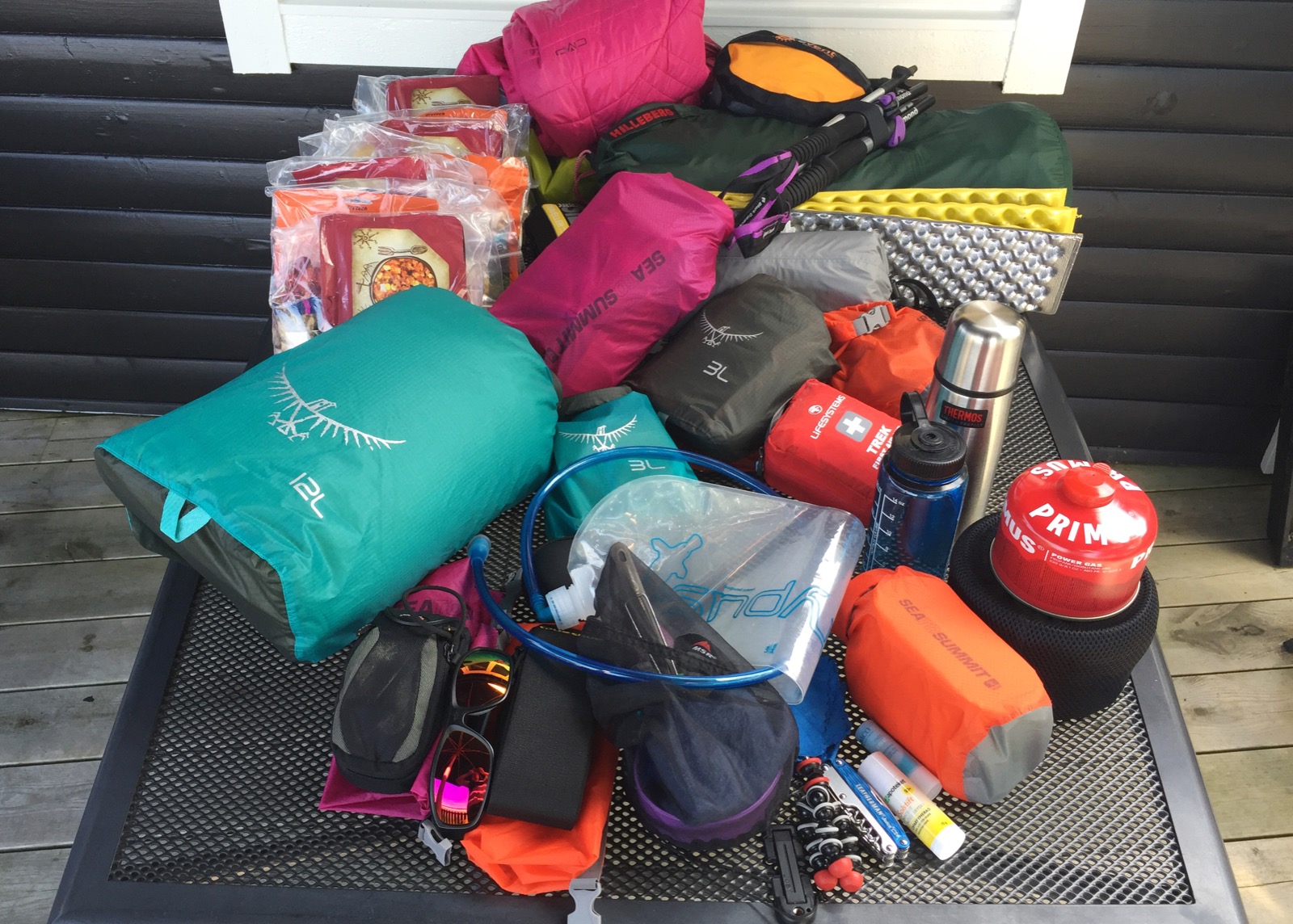
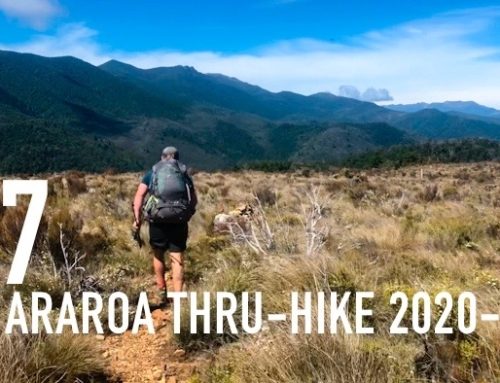
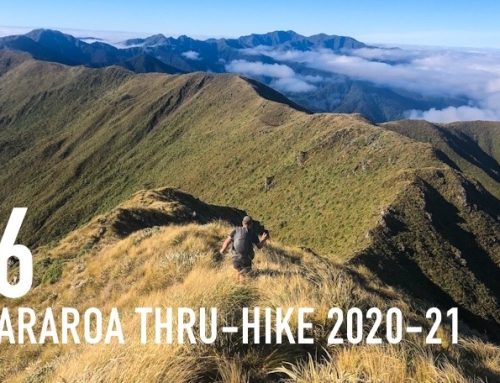
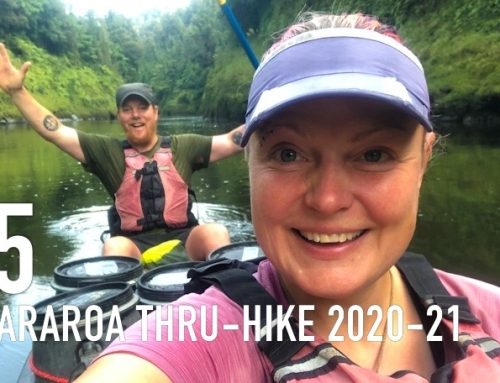
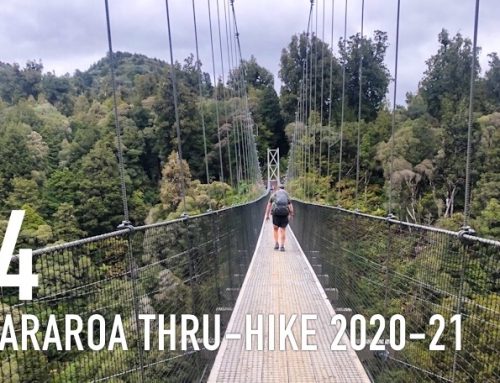
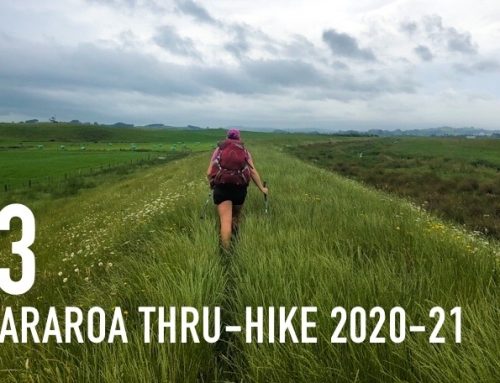
Hello! How many cash you pay. When you bying food in STF for next section?
Hi! Buying food at the STF mountain stations is very limited (very, very limited) and quit expensive. I cannot remember specific examples, but expect to pay 25-50% more than you would in a normal store. To send supplies to the STF mountain stations you need to use a service called “bussgods”. It is not run by the postoffice but mail delivered by the local bus company (www.bussgods.se). The shipping cost depend on size and weight, but as an example, in 2016 the shipping cost from Gothenburg for a medium box (max 20 kg) was 248 sek + additional fees. Additional fees included a delivery fee to the mountain station 65 sek, and a service fee for the mountain stations to receive and hold your box approximately 300 sek per box (paid when you pick up your box). Shipping to small towns on the way, like Ammarnäs or Jäkkvik, is a little cheaper since you only pay for the bussgods service not the additional fees. I hope that helps? 🙂
Hello,
Just wondering what kind of things did you had delivered to the mountain huts?
Did you get a delivery half way?
Are there a y wolves or bears that i should be aware of along the Trail?
I shipped everything I needed for the next stage to the mountain stations. Food, maps, sunscreen etc. Everything except gas for the cooker. No animals to worry about in Sweden. Enjoy your hike! 🙂
Hello i was looking to send supplies to the trail head like kvikkjokk jakkvik etc. Should I contact the The STF stations before i send the packages or can I just give the dilevery address with my name and date when i will receive it and when i reach the STF station i can pick up the package. And you approximately spent (248+65+300) around 600 SEK to dilivery food right ??
Hey! Always best to call (or email) ahead when you send to the mountain station or accommodation places. When you send to post shops it is not needed. Yes, it is expensive to send, but some places are quite remote so it is understandable. Have fun! 🙂
thanks for the great post – wondering if a 3 or 4 season tent is necessary for the Kungsladen in September (was the Allak overkill, or did the winds and cold necessity e?); also curious what temperature sleeping bag you went for
Sorry for the extremely late reply. We are not actively monitoring our online channels anymore, but I hope you found our site a good resource in your research. I also hope you had an amazing time hiking Kungsleden! As you most likely found out, no a 4 season tent is not necessary during most summer conditions, but a 3 season one is definitely a good idea. (Allak is overkill for summer, I opted for a Niak for my next adventure). You never know what the weather will be like up there, even in summer. Sleeping bag depends on how warm you sleep… I sleep cold, but prefer a lighter/medium warm bag in summer and complementing with a layer of merino thermals to boost that during extra cold nights. Thermals being more versatile than just packing a warmer bag. Cheers!